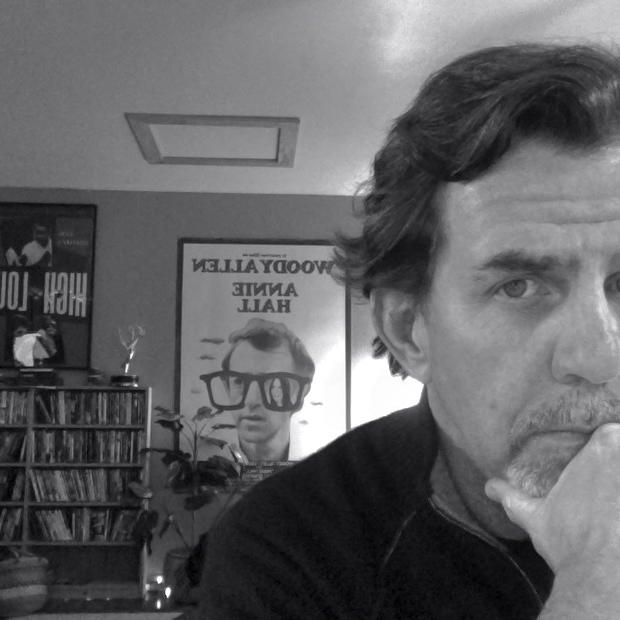A lot of Jimi Hendrix’s story is missing from the film, Jimi: All is by My Side. But what’s there is outstanding.
Concerned with the time Hendrix was discovered by Linda Keith (Keith Richards’s girlfriend at the time) while he was playing backup in soul and R&B bands, up through his breakout year in the U.K., and ending right before his superstar-making debut at the 1967 Monterey Pop Festival, the film steers clear of the usual biopic pit stops in favor of an impressionistic, illusive approach. The result is a visually and sonically rich immersion in time and place, buoyed by archival film snippets, old photographs, evocative sound cues and a free associating editing design.
Those qualities alone are enough to make this a daring and satisfying cinematic experience. But when you add André Benjamin’s dynamic performance as Hendrix and a supporting cast full of sharp, hard-hitting characters, Jimi: All is by My Side ranks as one of the best films of the year.
Hendrix scholars may take issue with some of the questionable aspects of the film, especially the episodes of domestic abuse. And there are some scenes that may trigger any viewer’s skepticism, like the time Hendrix insisted on playing with his idol, Eric Clapton, and then literally blew Clapton off the stage; or Jimi’s risky decision to open a show in London with his cover of the Beatles’ recently-released “Sgt. Pepper’s Lonely Hearts Club Band” knowing that Paul and George were in the audience.
According to Hendrix biographers, those two episodes are accurate. Like much of what occurs in the film, they are depicted as part of a simmering fever dream, a textural collage of relationships, incidents, meetings, rehearsals, backstage conflicts and musical experimentation, meshed together to suggest a time when living in the moment was “where it was at.
Screenwriter and novelist John Ridley (he won the Best Adapted Screenplay Oscar last year for 12 Years a Slave), makes his debut as a feature film director with this picture, and he demonstrates an astute ability to blend bold stylistic strokes with key crowd-pleasing interludes. His film is never too radical to be considered self-indulgent, nor too inward-looking to ignore what made Hendrix’s explosive talent so appealing.
The Sgt. Pepper scene is one of those standard biopic game-changers, but Ridley and his talented team (cinematographer Tim Fleming and editors Hank Corwin and Chris Gill) stage, shoot and cut it with grainy, smudgy spontaneity. This is typical of a movie that avoids a plodding chronology in favor of a messier, scuffed, sensory-fueled trajectory. Even mere conversations are overlapped and shuffled, as if the structure of time itself is irrelevant.
”
André Benjamin inhabits Hendrix with a mercurial amiability. He mumbles, stutters and radiates youthful indifference. Small historical details emerge; his habit of chewing gum on stage (even while singing) and his love of upmarket, thrift-store clothing. Benjamin also portrays him as narcissistic, unkind and frustratingly opaque.
This is a young man still finding himself, confident in his musical genius but adrift when it comes to interpreting the rest of what was going on his life. The women in his world are played indelibly by Imogen Poots, Hayley Atwell and Ruth Negga, a fresh change from the derisive groupie caricatures we’ve come to expect from the usual leave-a-beautiful-corpse biographies.
One of the more impressive achievements of the film is that Ridley brings Hendrix to life despite being denied permission to use any of Jimi’s music by the Hendrix estate. You won’t hear “Foxy Lady”, “Purple Haze” or “Hey Joe” — which seems rather stingy of the man’s heirs considering you can find dozens of his performances on YouTube. But ultimately this obstacle makes little difference.
The limitation freed Ridley to find other creative ways to express the musician’s fiery talents. By showing how he could play a blues classic like “Killing Floor” or astonish his soon-to-be-manager (a cheerful, harried Andrew Buckley) with an effortless instrumental riff, Ridley suggests that the foundation for Hendrix’s prodigious skills and renegade ambition was laid early on. In that way, Jimi: All is by My Side gives us an exquisite, intimate ringside seat to the dawning of the Jimi Hendrix Experience.
This article was orginally featured on "The Restless Critic" blog.


